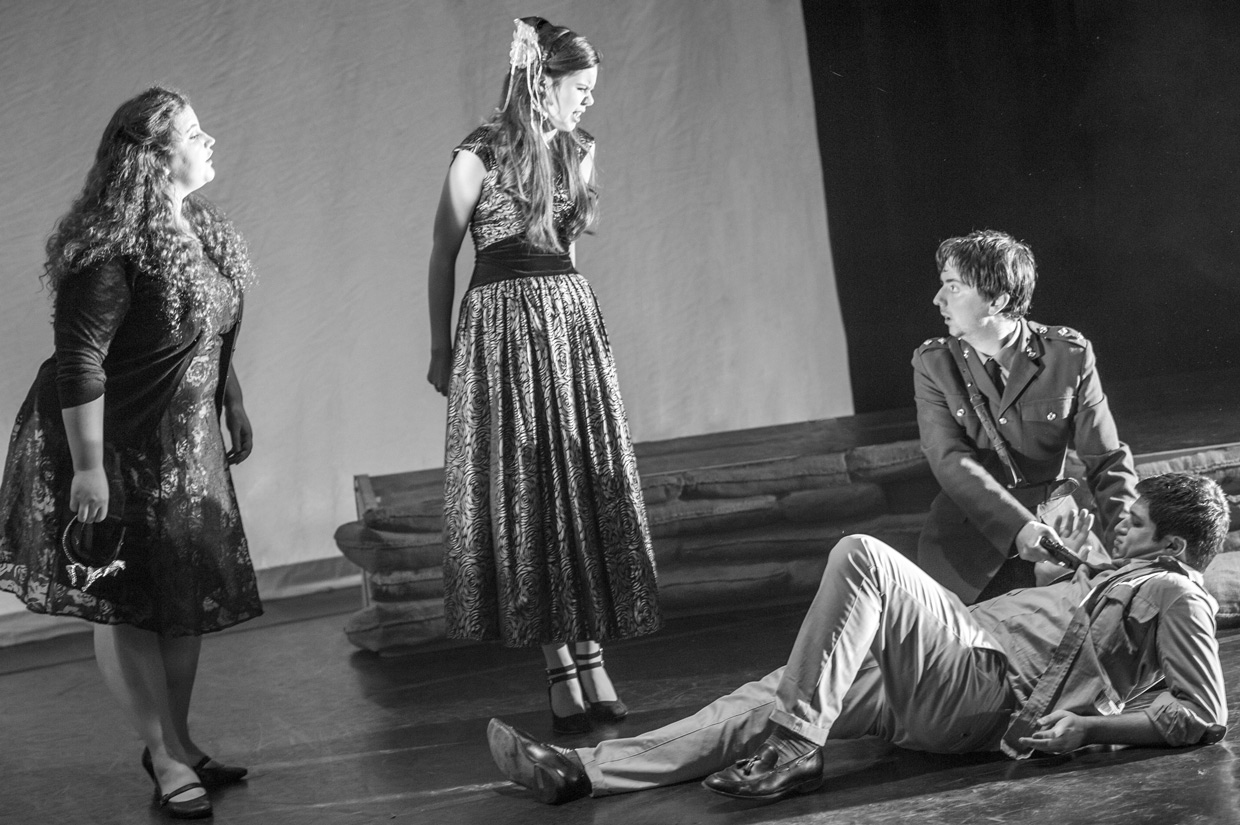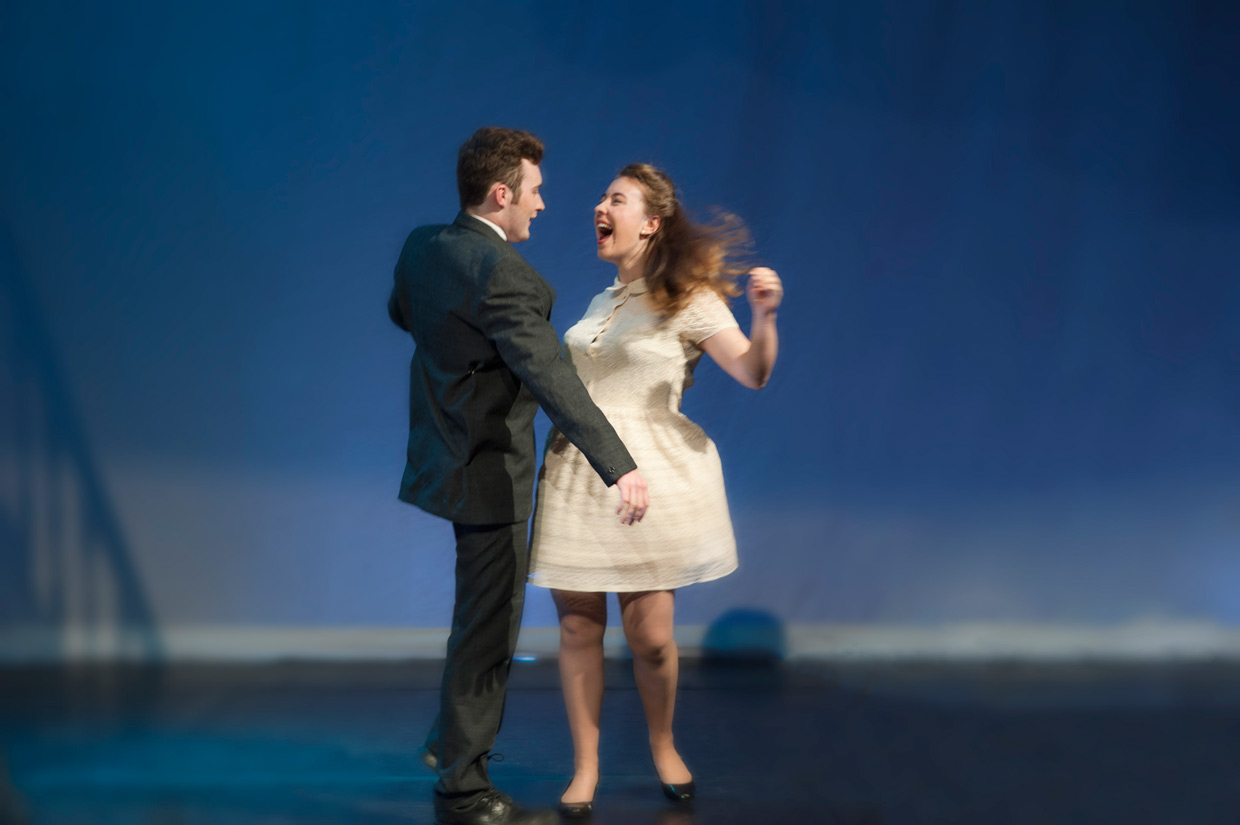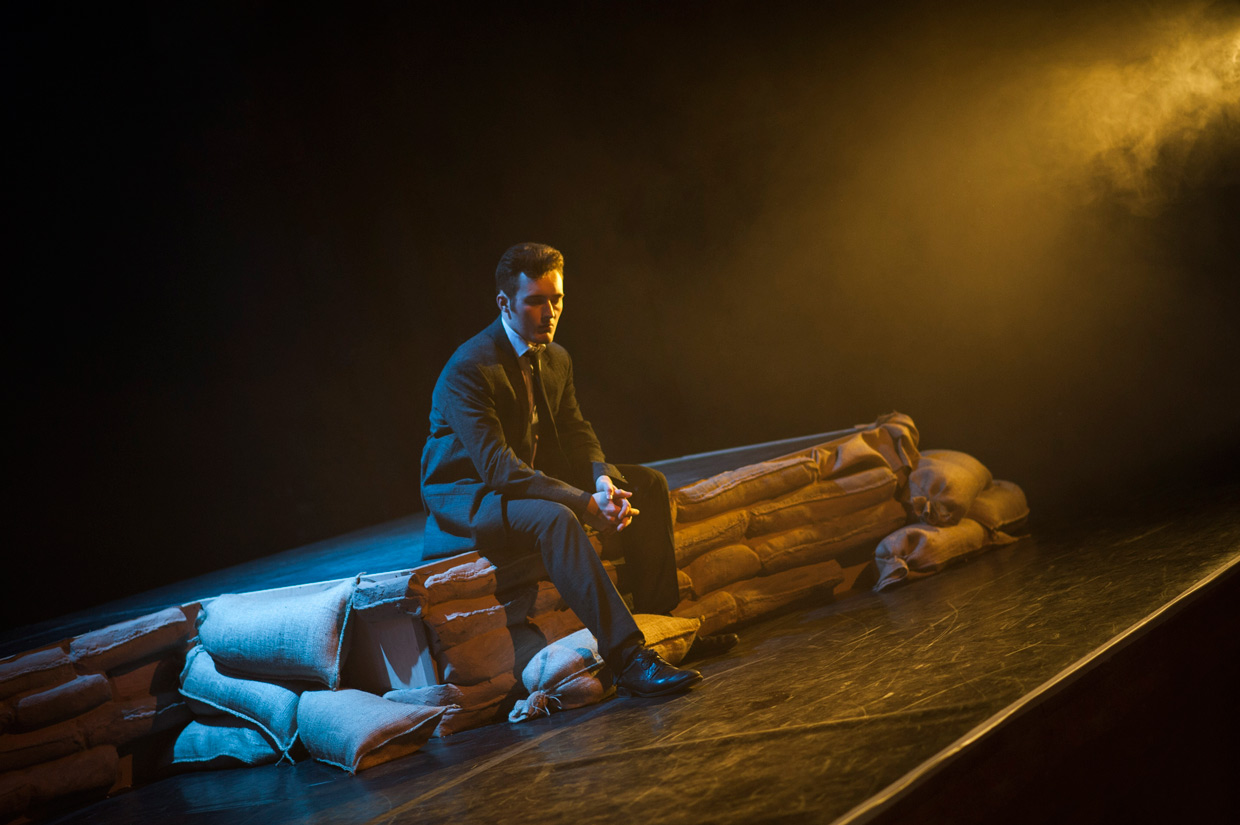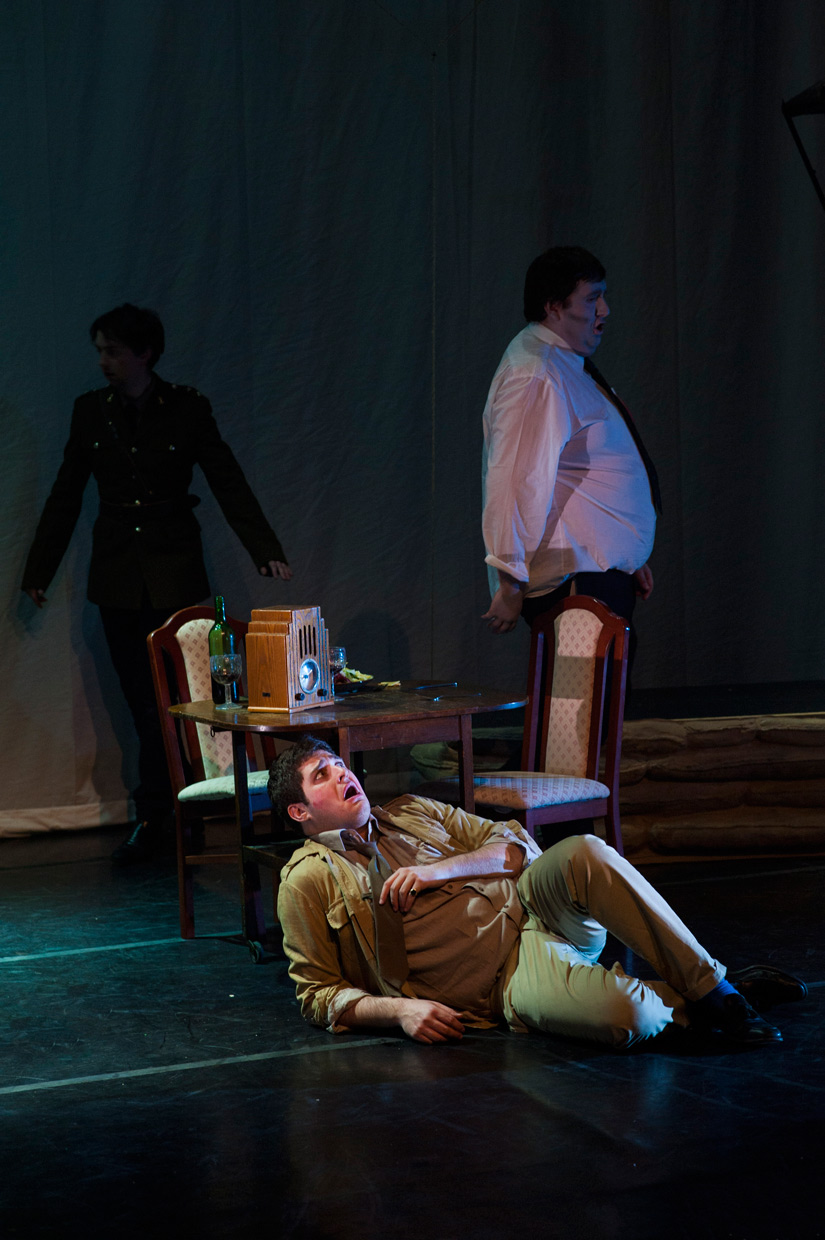Thanks to an invite from Kikki Betts-Dean I had the opportunity to photograph the Cambridge University Opera Society’s (CUOS) dress rehearsal for Don Giovanni last wednesday. As you will see when reading below I thoroughly enjoyed myself, shooting almost non-stop for three hours. The only indication that I’d been going for so long was a somewhat tired right arm. It was a photographer’s wet dream! You have great light which varies between scenes, smoke, fantastic costumes, action and human emotions all bundled up into a nice package. As a bonus there was no audience that I needed to worry about disturbing, which meant I was free to move around in front of the stage to get the best angles. For example, the wall in the back was split in a blue half to the left, and black half to the right, and I was trying to position myself so that the actor in focus would be right in the middle, mimicking that they were hanging in the balance between two options. It was a game where only one of the players knew what was going on, but the actor, without knowing it, put up a good fight by moving around. Another thing I tried was to get the person clad in black on the lighter background, and the person in white on the black background, once in a while the constellation aligned and I had to make sure to be in the right spot then. I’ll show a few photos from the opera below. One of my favourite locations to stand was to the far left, with the side lights almost facing me, and the smoke in between, it made for some fantastic shots.
I started out using the 50mm f1.4, and took some shots of the people around me, but by the time the rehearsal started I had switched to the 85mm f1.8 lens to get in closer on the action. I bought it a while back but have not used it for much other than the occasional portrait shooting. The lens gives good light, but I found myself being a bit hampered by the slow auto-focus that sometimes did not lock on properly. On a few occasions that made me miss a shot. All I could do was to anticipate what would happen next and pre-focus accordingly. Most of the time the slow auto-focus was not a problem.
For years I have been shooting in aperture priority mode, and I still do. You get to pick the aperture and thus control the depth of field, and the camera takes care of shutter speed and ISO for you. This is a good compromise between control and convenience. However sometimes it is not enough. I noticed while shooting at formal halls and other poorly lit places that sometimes the shutter speed got too slow, causing blurry shots, or the camera would expose for one bright light in the background, making the rest of the shot too dark. At one formal hall I ended up switching to shutter priority mode, and felt really clever when at least the shots were sharp, but perhaps a bit dark. My friend Malin over at pastil.nu has been shooting in manual mode for a while, which got me curious. By switching to full manual mode you get consistent exposures even though things might change in your scene. Of course, this also means that if you have a sudden change in light level, say the theatre stage changes from darkness to being criss-crossed by flooding spotlights, then you have to adjust your settings accordingly. I had a few episodes where I frantically turned on the ISO dials to get the exposure back to a safe range again, but on the whole it was pretty good experience. I did check the histogram once in a while to make sure things were ok, but looking at the photos afterwards I probably should have done that more often. There are a good many that are a bit underexposed, and the occasional overexposed photo, but I think I am slowly getting the knack of full manual mode.





I got a bit too immersed in writing this blog post, my food burned on the stove. I hope you found the post interesting. Below are a few photos from the evening. Enjoy!
/Johannes
Reviews: Varsity (4/5), The Cambridge Student (8/10), The Tab
Cast
Don Giovanni – Michael Craddock
Leporello – Henry Hawkesworth
Donna Elvira – Janneke Dupre
Donna Anna – Billie Robson
Ottavio – Sam Oladeinde
Zerlina – Sophie Horrocks
Masetto – Peter Lidbetter
Commendatore – Hugo Herman-Wilson
Chorus – Camilla Seale, Mary Hamilton, Nell Warner, Olivia Bell, Maddy Seale, Emma Simmons, Faith Waddell, Laurence Booth-Clibborn, Alexander Gebhard, Jonathan Pacey, Will Geeson, Kit Preston-Bell, Julia Sinclair, Alice Halstead, Hamish MacLaren, Will Searle, Toby Ward
Band
Continuo – Patrick Milne
Violin – Rhiannon Randle, Hannah Bell, Angus Bain, Helen Stirling, Gabriella Jones, Natalie Rickard, Amelia Drew
Viola – Tom Taylor, Nathalie Green-Buckley, Ed Daley
Cello – Ghislaine McMullin, Hugo Popplewell
Double Bass – Arvin Vaghela
Flute – Rosie Bowker, Jasmine Bourne
Clarinet – David Mears, Joshua Borin
Oboe – William Ball, Rees Webster
Bassoon – David Bennett, Jamie McDonald
Horn – Jeremy Judge, Frances Leith
Trombone – Chris Gemmell, Mike Buchanan, Emma Bassett, Alex Kelly, Amy Harding
Trumpets – Malachy Frame, Will Finch
Timpani – Susie Alaghband-Zadeh
Mandolin – Johann Hendrik Kamper
Production Team
Producer – Tamsin Lim
Director – Emma Wilkinson
Musical Director – Patrick Milne
Assistant Musical Director – Hugo Popplewell
Makeup Designer – Georgia Thurston
Deputy Stage Manager – Amy Cooper
Assistant Producer/Publicist – Kiki Betts-Dean
Assistant Producer/Outreach – Esme Mahoney
Assistant Stage Manager – Leanne Walstow
Makeup Artist – Kate Gerhard
Trailer Cinematographer – Agatha Stern
Publicity Designer – Atri Banerjee
Production Photographer – Thurstan Redding
Assistant Stage Manager – Anna Lush
Stage Manager – Olivia Franks
Assistant Lighting Designer – Thierry Mousset
Costume Designer – Hannah Everett, Ellie Dobbs
Assistant Director/Set Designer – Robert Hawkins
Pair of Ears – Quintin Beer
Hammer of Thor – Leo Cairns
Fight Choreographer – Sam Brain
Dress Rehearsal Photographer – Johannes Hjorth
Be First to Comment